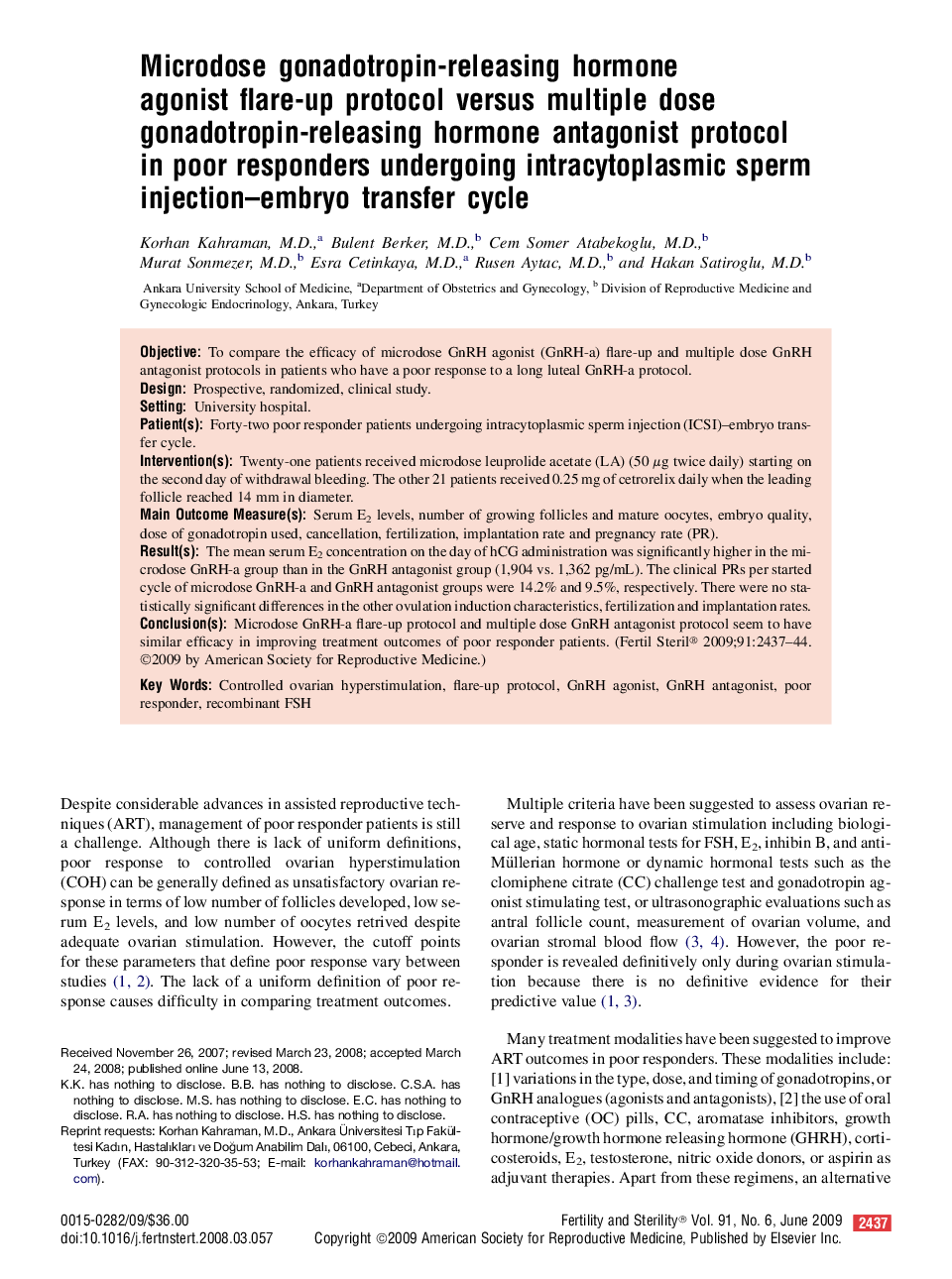| Article ID | Journal | Published Year | Pages | File Type |
|---|---|---|---|---|
| 3934256 | Fertility and Sterility | 2009 | 8 Pages |
ObjectiveTo compare the efficacy of microdose GnRH agonist (GnRH-a) flare-up and multiple dose GnRH antagonist protocols in patients who have a poor response to a long luteal GnRH-a protocol.DesignProspective, randomized, clinical study.SettingUniversity hospital.Patient(s)Forty-two poor responder patients undergoing intracytoplasmic sperm injection (ICSI)–embryo transfer cycle.Intervention(s)Twenty-one patients received microdose leuprolide acetate (LA) (50 μg twice daily) starting on the second day of withdrawal bleeding. The other 21 patients received 0.25 mg of cetrorelix daily when the leading follicle reached 14 mm in diameter.Main Outcome Measure(s)Serum E2 levels, number of growing follicles and mature oocytes, embryo quality, dose of gonadotropin used, cancellation, fertilization, implantation rate and pregnancy rate (PR).Result(s)The mean serum E2 concentration on the day of hCG administration was significantly higher in the microdose GnRH-a group than in the GnRH antagonist group (1,904 vs. 1,362 pg/mL). The clinical PRs per started cycle of microdose GnRH-a and GnRH antagonist groups were 14.2% and 9.5%, respectively. There were no statistically significant differences in the other ovulation induction characteristics, fertilization and implantation rates.Conclusion(s)Microdose GnRH-a flare-up protocol and multiple dose GnRH antagonist protocol seem to have similar efficacy in improving treatment outcomes of poor responder patients.
